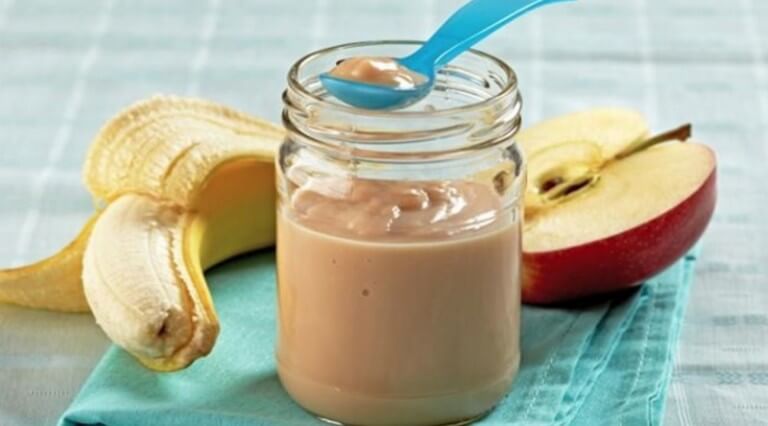No More Mashed Foods: The Benefits of Baby-Led Weaning

In today’s article, we want to talk about the many benefits of baby-led weaning as a way to introduce your child to a complementary diet.
According to experts, many parents wait too long before they start introducing their baby to solid food. Do you know why?
When a baby starts to chew on their own hand, many parents assume it’s because they’re about to get their first teeth. But actually, this is something your baby does to prepare themself for eating.
Over and over again, you’ll see your baby put their hand in their mouth. And not only their hand, but anything and everything they find. And once they’ve got something in their mouth, they start to chew.
When the time comes to start giving their baby food, many parents start out with mashed or pureed food. However, if your child becomes too accustomed to these textures, problems may arise.
There may come a point when they no longer feel the need to grab things and put them in their mouth. And their curiosity for trying new things may disappear.
Remember that your baby’s nutrition is the foundation for their health.
“If I eat and sleep well, then I’m not sick”
-Anonymous-
According to experts, many parents take too long to introduce foods that aren’t pureed or mashed into their child’s diet
Countless studies have shown that breast milk is the best source of nutrition for babies during their first months of life.
However, after 6 months, nursing should be accompanied by a complementary diet. This diet should be guided by your child’s needs, as well as their maturity and the interest they show in food.
If you give your baby solid foods early on, then they’ll develop the ability to manipulate them in their mouth without choking. The sooner a child develops this skill, the less risk there is of choking.
This is where we introduce “baby-led weaning,” or BLW. BLW allows your child to be an active participant in their feeding. It also helps to prevent childhood obesity.

What is baby-led weaning?
BLW is a specific method for introducing your child’s complementary diet. It’s based on offering your child whole foods that they can grab and bring to their mouth, rather than spoon-feeding your baby mashed food.
The key to this technique is giving your little one the same foods that the rest of the family is eating.
Instead of mashing the food, you give your child portions that they can easily pick up with their hands. For example, you can give your baby pieces of green beans, potatoes, bananas, pears, etc.
Your baby can pick the foods up themself and put them in their mouth. This allows them to experiment not only with different tastes, but also with different textures. And by chewing, they’ll strengthen the muscles in their mouth.
At first, your baby will probably eat very little. But over time, they’ll come to eat larger quantities.
Once your child has tried their food and shown that they don’t want anymore, then you can offer to nurse them or give them their bottle to make sure they’re full.
The BLW method allows your child to take on a more active role in which they regulate the amount of food they take in. They also better develop the sensation of being full, which helps to prevent childhood obesity.
Basic recommendations for the BLW method
To guarantee that your child’s energy needs are being met and to avoid the risk of choking, it’s extremely important to be attentive when it comes to your baby’s nutrition.
- Offer foods that provide sufficient energy
- Continue breastfeeding
- Provide foods each day that contain iron
- Watch your baby at all times and adapt the food to their needs
It’s important to remember that children between the ages of 1 and 3 grow at a much faster rate than adults. Therefore, you might be surprised to see your 2-year-old eating more than their parents.

The benefits of baby-led weaning
- Promotes breastfeeding
- The acquisition of healthy eating habits
- Establishes eating habits tied to the sensation of being full
- Promotes the child’s motor development
- Greater acceptance of food that is normally eaten by the family, with a variety of textures and flavors
- The child consumes healthier foods
- BLW is more respectful toward the child
- The complimentary diet is seen as a learning process
- The baby decides how much to eat – quantity doesn’t matter
All cited sources were thoroughly reviewed by our team to ensure their quality, reliability, currency, and validity. The bibliography of this article was considered reliable and of academic or scientific accuracy.
- Fewtrell M, Bronsky J, Campoy C, Domellöf M, Embleton N, Fidler Mis N, et al. Complementary feeding: a position paper by the European Society for Paediatric Gastroenterology, Hepatology, and Nutrition (ESPGHAN). Committee on Nutrition. J Pediatr Gastroenterol Nutr. 2017 Jan;64(1):119-32.
- Vissers KM, Feskens EJM, van Goudoever JB, Janse AJ. The timing of initiating complementary feeding in preterm infants and its effect on overweight: a systematic review. Ann Nutr Metab. 2018;72(4):307-15.
- Pérez-Escamilla R, Segura-Pérez S, Lott M. Feeding guidelines for infants and young toddlers: A responsive parenting approach. Nutrition Today. 2017;52(5):223-31.
